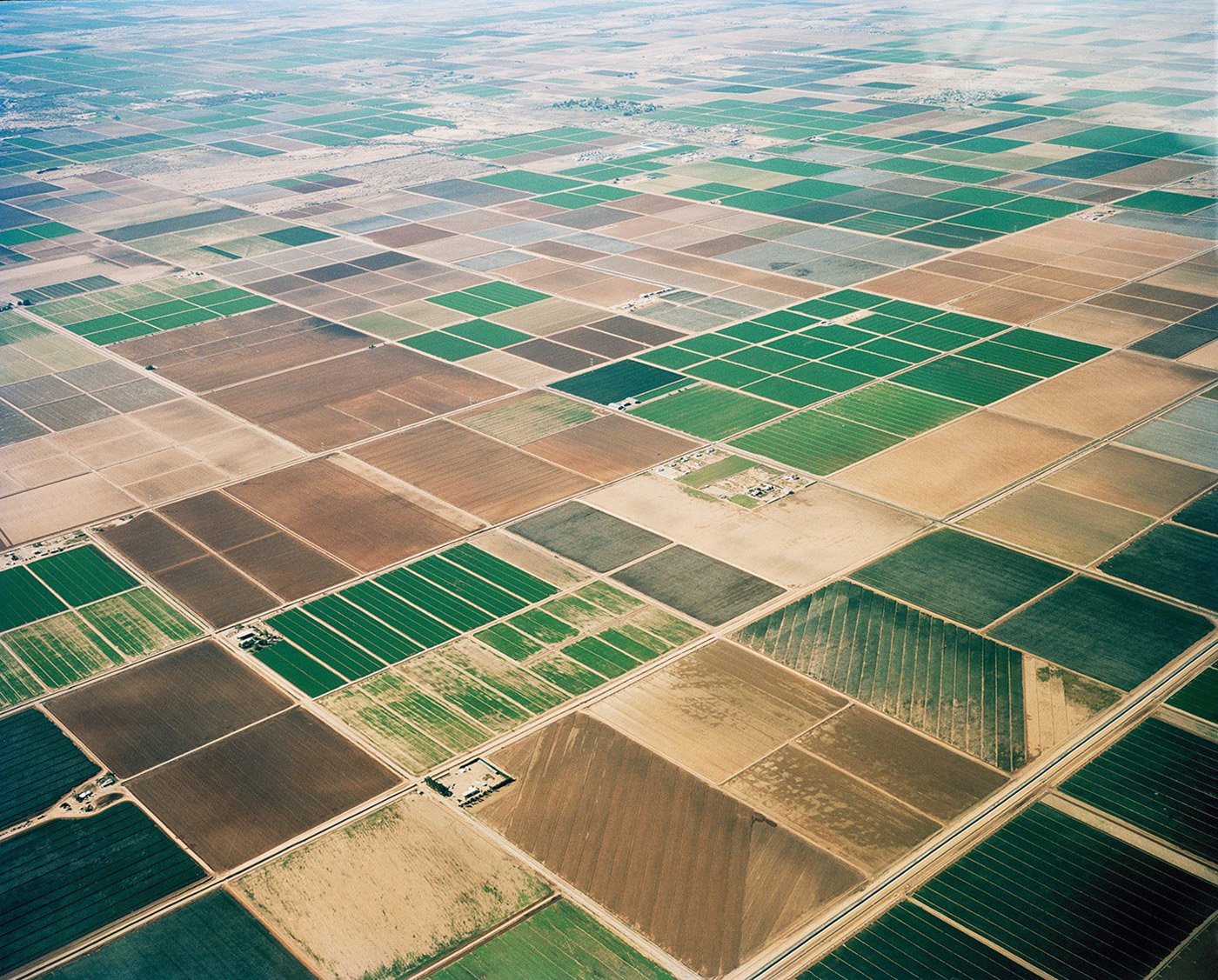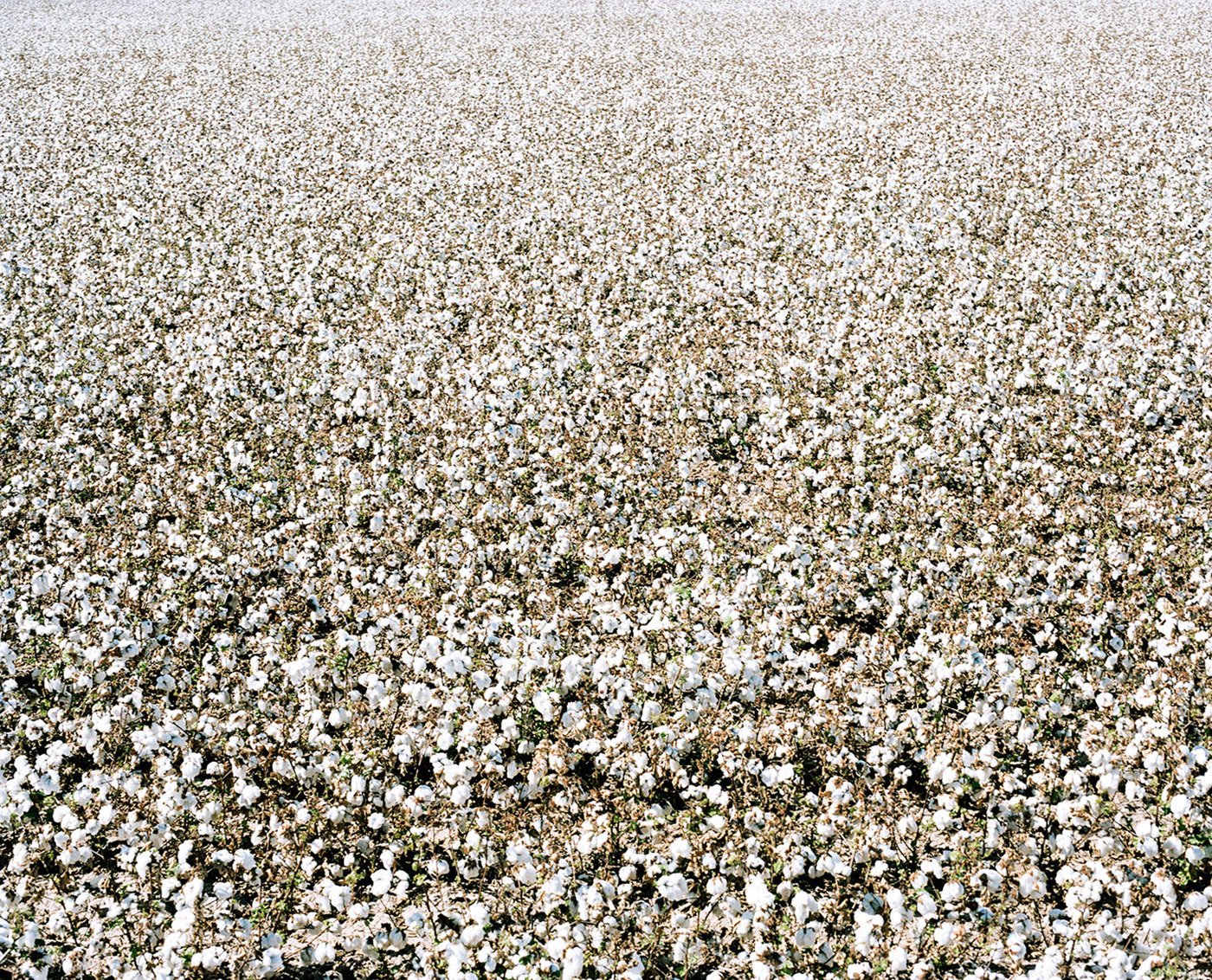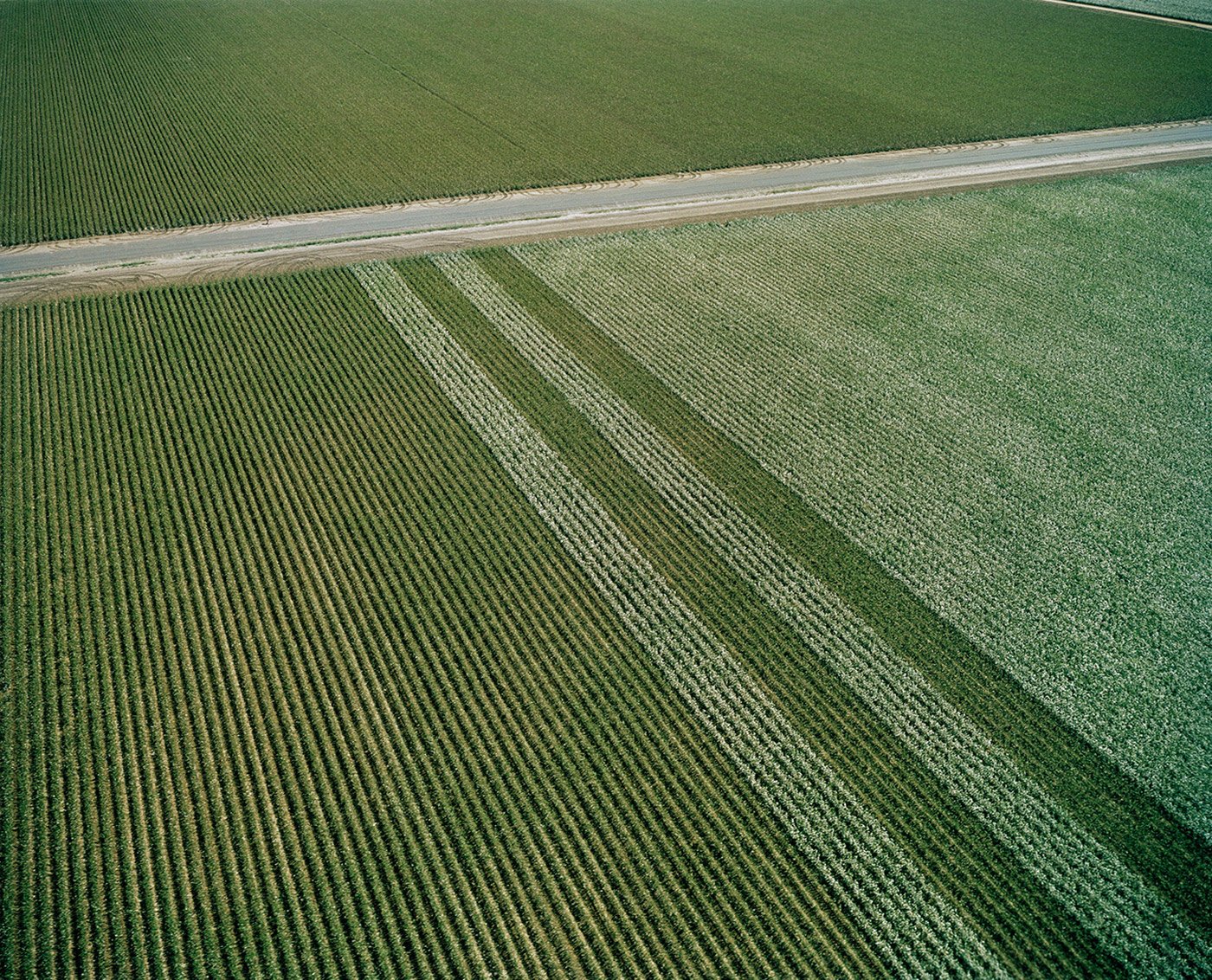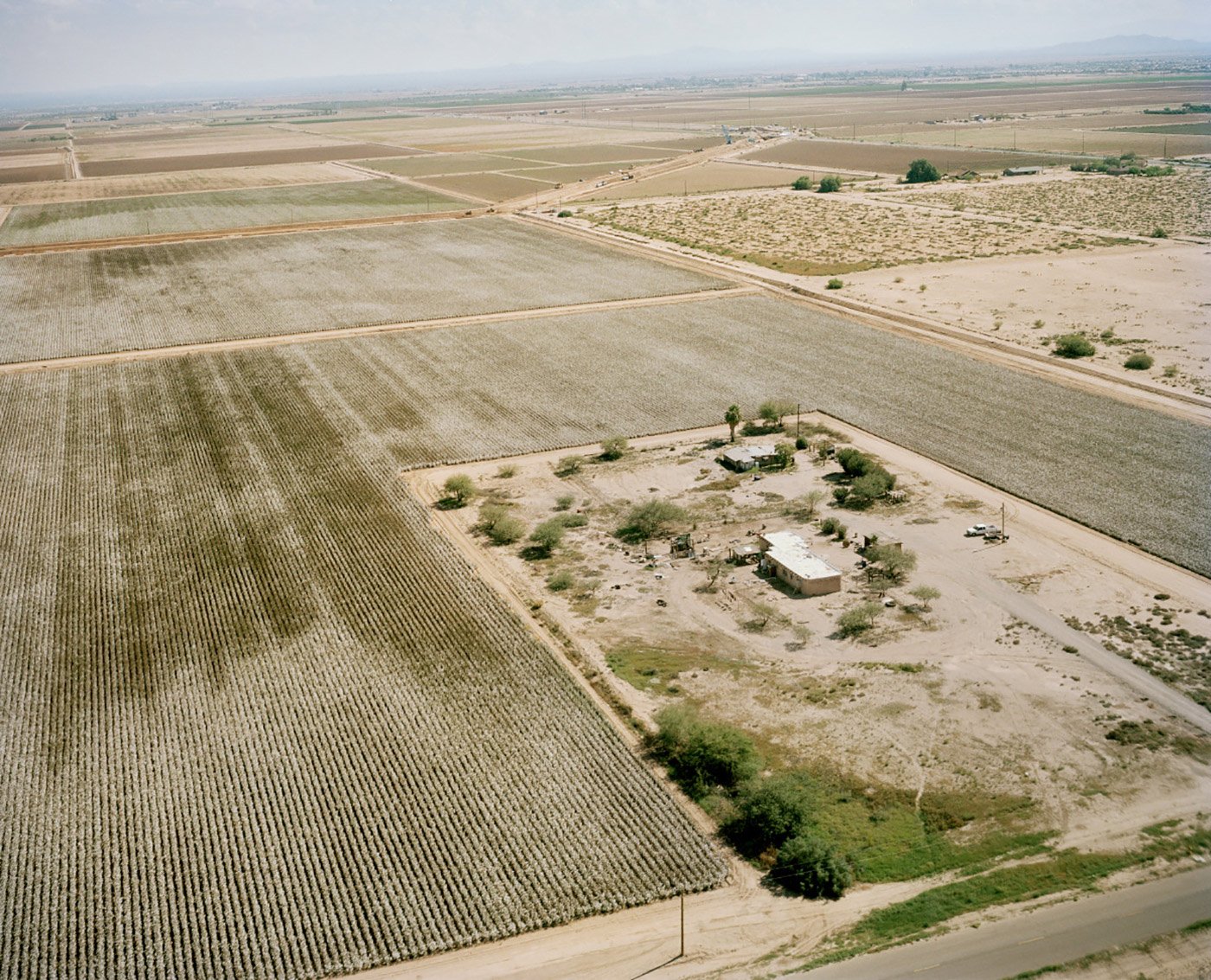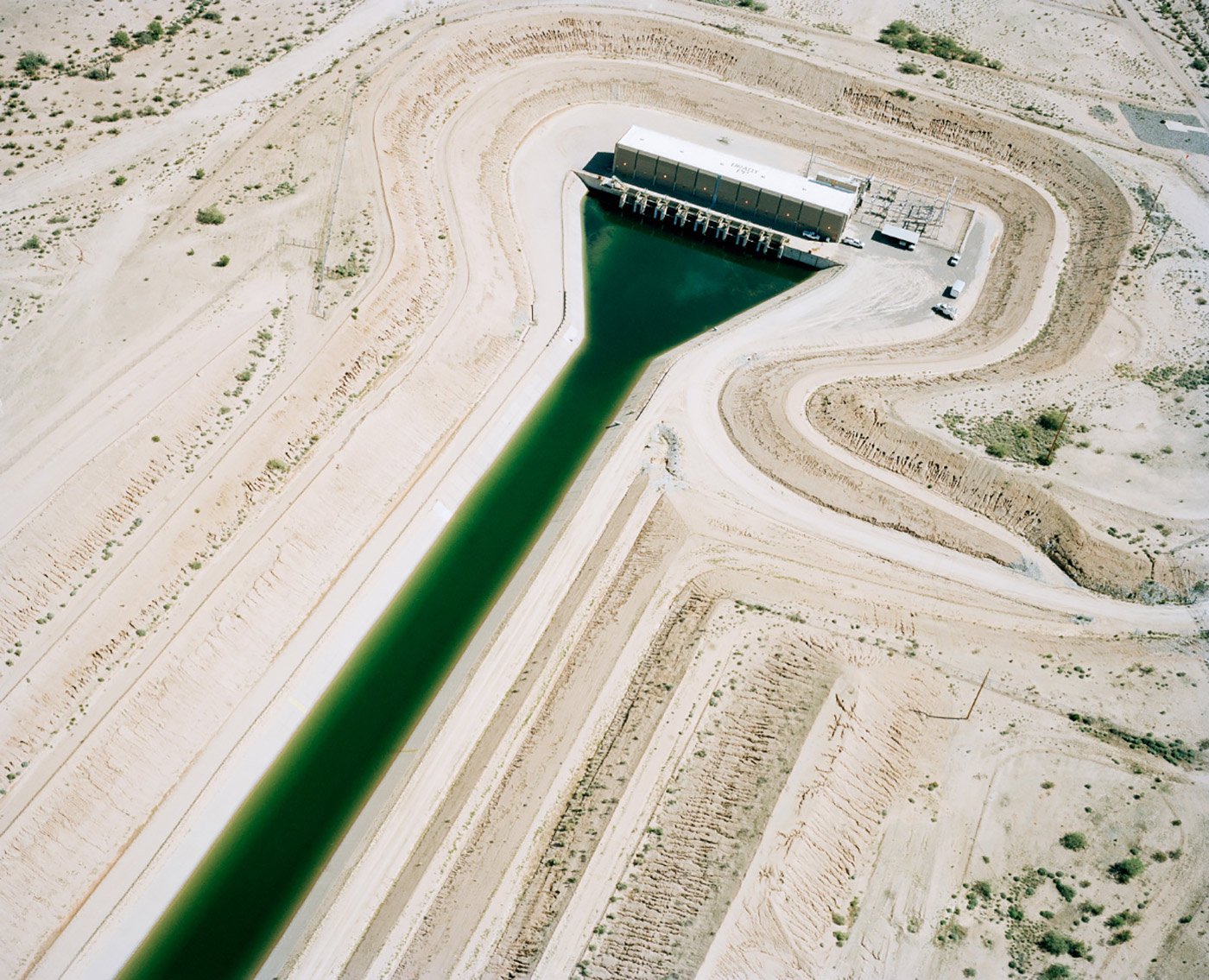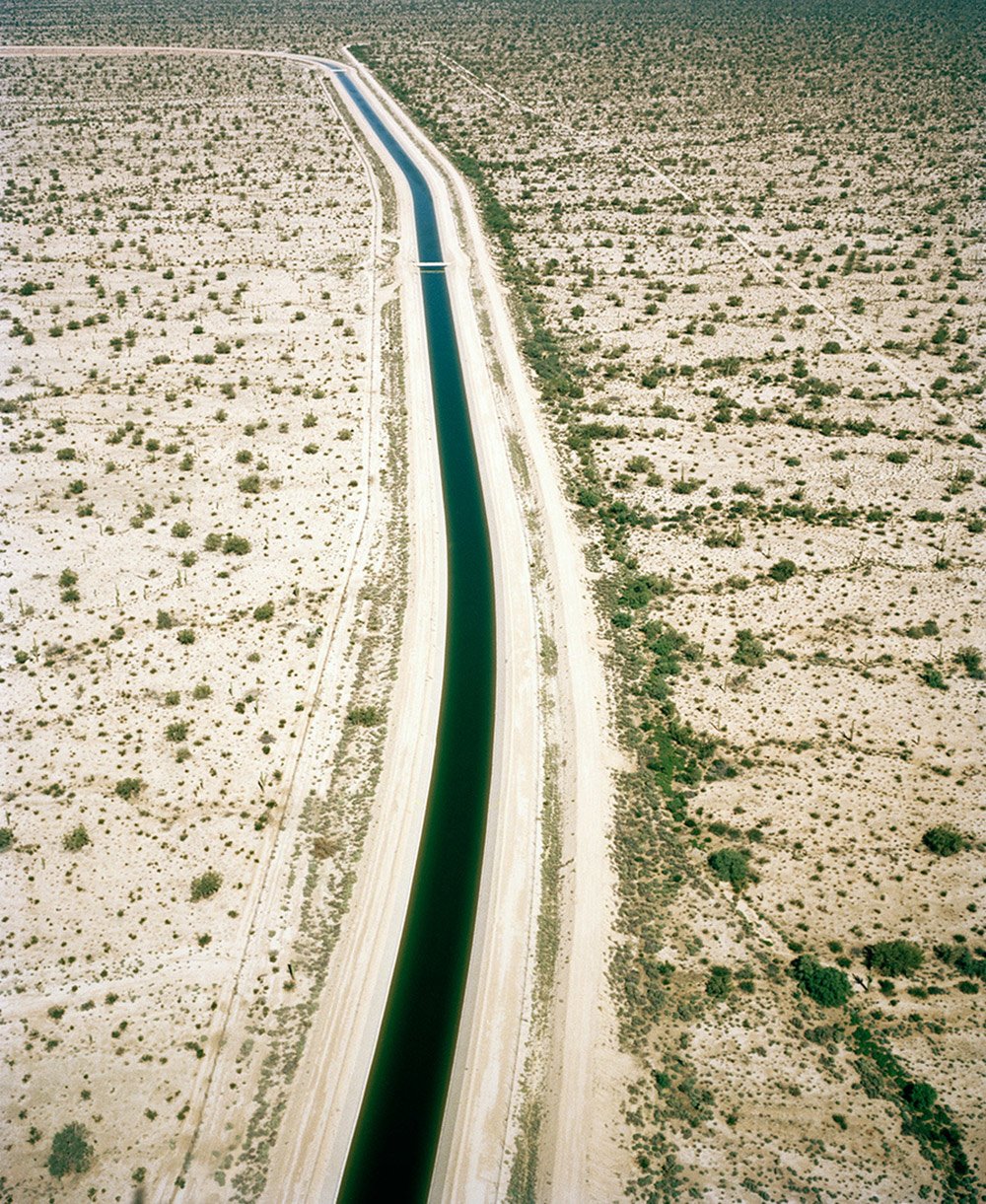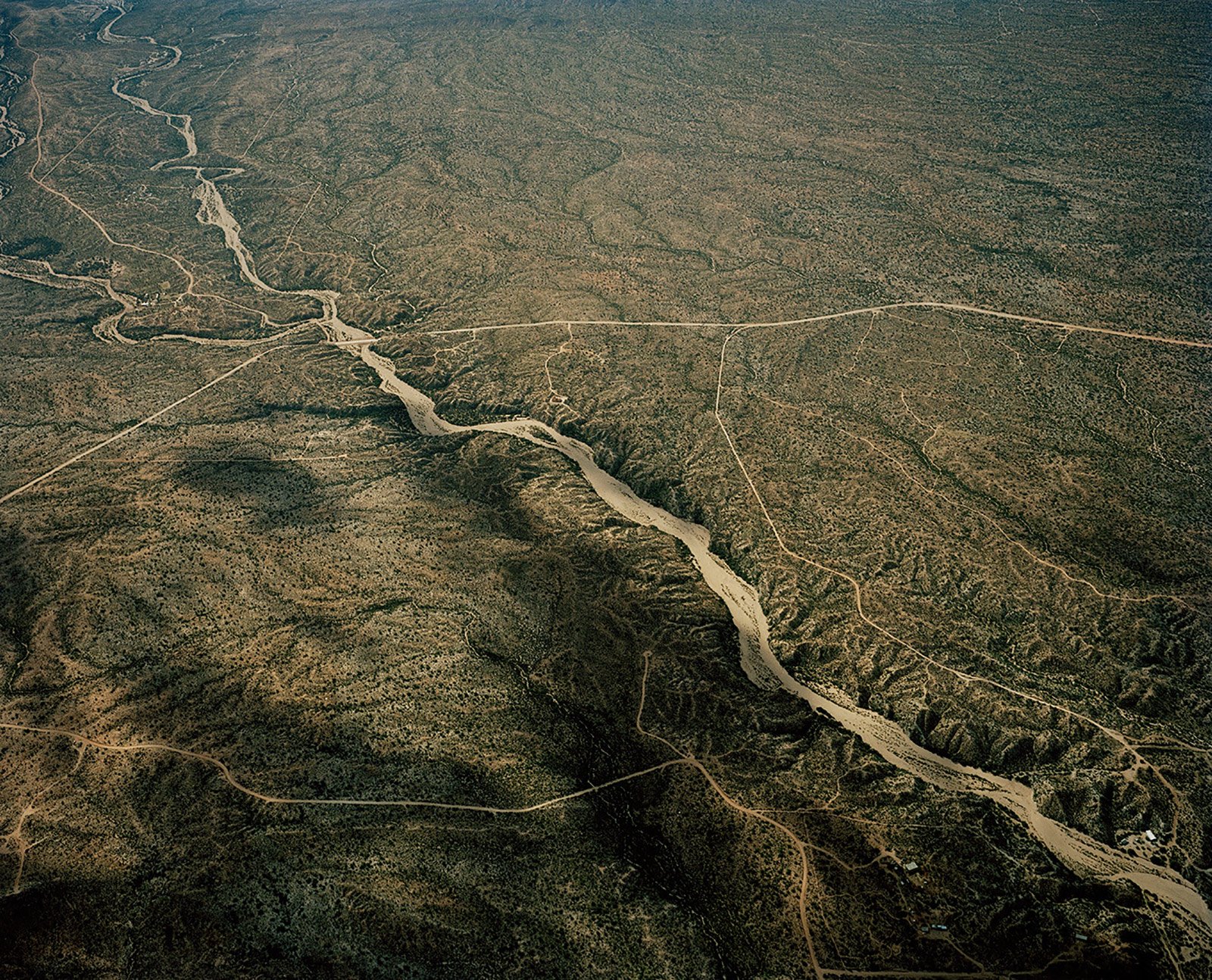Arizona, California and several other states have been experiencing severe droughts in what experts fear could be the worst crisis of this kind in over 1,000 years. Yet cotton fields are thriving in the notoriously dry climate, even though they require six times more water than lettuce and up to 60 percent more than wheat to grow. Farmers receive incentives to maintain the fields even as the demand for cotton decreases. Abrahm Lustgarten and Naveena Sadasivam wrote an article for Medium and ProPublica about this complex issue, and Jake Stangel provided the aerial photography. The stunning images show the magnitude of the industry’s environmental impact. Geometric patterns created by bright green squares of irrigated plants alternate with dry brown earth in an expansive landscape. Water is imported to a scorched land, traveling alongside white sands and cracked earth. Fields with plants in bloom spread across huge plots, reaching out toward the horizon. It’s a fascinating view of an agricultural process mainly kept out of sight and a rare opportunity to get a glimpse at the scale of an unsustainable industry. A photograph is worth a thousand words, and in a world where water has become more precious than ever before, these images are the most effective medium to illustrate the urgency of upgrading cotton farming methods for the 21st century. Images courtesy of Jake Stangel.



